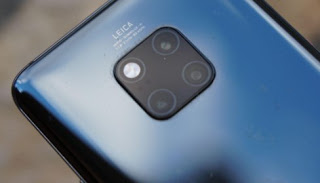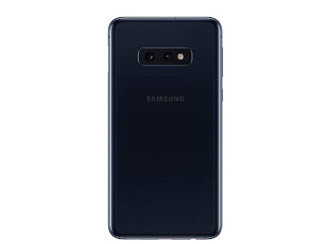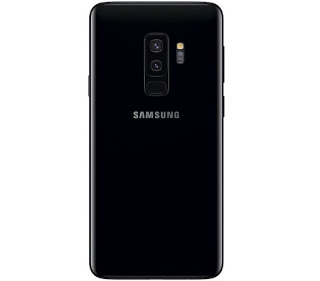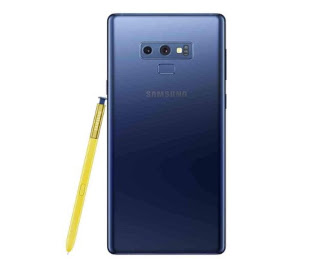 The most used method to take pictures today is surely the smartphone, also thanks to the simplicity of use, the ease with which it is possible to share the photos taken on social media and the numerous filters and effects available to make each shot unique.
The most used method to take pictures today is surely the smartphone, also thanks to the simplicity of use, the ease with which it is possible to share the photos taken on social media and the numerous filters and effects available to make each shot unique.But taking pictures with any smartphone on the market is very different from taking pictures with a smartphone equipped with a good sensor and quality optics: we will be able to immediately perceive the goodness of the shot and our shares will be even more successful, precisely because the photos will be perfect and without artifacts even in the absence of filters.
In this guide, we want to show you smartphones with the best camera currently available on the market, so as to combine your ability to capture every moment of your life with a high-quality goal.
READ ALSO: Which cell phone takes better pictures
Smartphone camera features
Smartphones with excellent photographic skills must possess most of the features listed below; they do not have to possess them all, but at least the first 5 must absolutely be present in order to distinguish themselves from normal smartphones with an economic photosensor.
- Image stabilizer: to prevent the photos from being moved, the optical image stabilizer (OIS) must be present, so as to fully compensate for every movement of the hand.
- Multi-camera: more and more models on the market improve the quality of the shot by using more rear cameras (3, 4 or even more). In order to process a high-quality shot, each camera captures the same subject in various ways: for example, a camera captures the image in color, another in black and white, others still combining HDR and various improvements. The smartphone brings together all the shots automatically, creating (in just a few fractions of seconds) photos with brighter colors and truly exceptional contrasts.
- Optical zoom: more and more smartphones offer an optical zoom, which differs from the digital one because it is generated by the movement of the optics (which approaches and moves away based on our command). It is superior to the digital zoom because it does not ruin the image quality (even if the optical zoom on smartphones hardly has more than 3X of magnification).
- Photosensor: the quality of the final shot also passes by the type of sensor used. We choose if possible models with 12 MP sensor or higher to always get full shots of details.
- Artificial intelligence: thanks to the special chips mounted on the phone, the camera is able to recognize the scenario in which we take the shot, automatically changing the parameters to always get a perfect photo. Really essential to be able to fill in any gaps during shooting.
- Shutter speed: another very important parameter is the shutter speed, that is the moment that passes from the pressure of the button on the screen to the actual realization of the photo. Times lower than the second are always a strength.
- Camera app: also the default app used for the shots can make the difference between two identical sensors in all. We try to focus on models that offer all the adjustable basic settings but that can also show the most advanced settings, such as white balance, saturation, ISO and exposure.
- Dual Pixel: this technology is used on rear cameras to double the number of captured pixels and thus obtain high resolutions with a decidedly smaller sensor. With the arrival of multi-sensors, this technology has quickly fallen into disuse.
- Autofocus: the latest discovery in this sense is the laser autofocus, which allows focussing the image using laser technology for pointing.
- The color spectrum sensor (HDR): if the image is too bright or too dark, the color spectrum sensor will make the colors of all the photos realistic, so as to always get perfect shots in any light condition.
Smartphone with a better camera
After having seen together with the characteristics that a smartphone dedicated to the photographs must possess, we see together the best models that we can take into consideration, so as to guide our choice towards the smartphone that best suits our needs (also economic).
Samsung Galaxy S10e
The most “economic” photographic smartphone we can consider is the Samsung Galaxy S10e, which has a 5.8 “display, 128 GB expandable internal memory, Dual SIM slot, dual rear camera 12 MP + 16 MP, optical stabilization and optical zoom 0.5X.
We can view the product from here -> Samsung Galaxy S10e (€ 499).
Huawei Mate 20 Pro
Another very valid product in terms of photography is the Huawei Mate 20 Pro, which has a 128 GB internal memory, 6.39 “QHD + OLED display, Kirin 980 Octa-Core processor, artificial intelligence system for taking pictures, triple 40 MP +20 MP +8 MP rear camera, Leica optics, autofocus system and optical stabilization.
We can view the product from here -> Huawei Mate 20 Pro (€ 599).
Samsung Galaxy S9 +
Although belonging to the last generation of Samsung, the Galaxy S9 + remains one of the best photographic smartphones, thanks to the 6.2 “display, 64GB expandable internal memory, Dual SIM slot, dual rear 12 MP Dual Pixel camera and dual-LED flash.
We can view the product from here -> Samsung Galaxy S9 + (€ 612).
Nokia 9 PureView
The smartphone with the May number of rear cameras is definitely the Nokia 9 PureView, which has a QHD display and a POLED screen, 128 GB of internal memory, 6 GB of RAM, 5 rear 12 MP cameras, Zeiss optics, laser, and flash autofocus LED.
We can view the product from here -> Nokia 9 PureView (€ 674).
Samsung Galaxy Note 9
The most beautiful Samsung smartphone to buy is definitely Note 9, which has a 6.3 “Super AMOLED screen. Infinity Display, resolution 2.960 x 1.440 pixel (WQHD +), Exynos 9810, dual rear 12 megapixel camera with variable aperture (f / 1.5 of / 2.4) + 12 megapixels with zoom, f / 1.7 and autofocus.
We can view the product from here -> Samsung Galaxy Note 9 (€ 680).
Huawei P30 Pro
If we look for the top of the range in the photographic sector, we will probably have to focus on the Huawei P30 Pro, which boasts an 8 GB RAM, an internal memory of 128 GB, a triple rear camera of 40 MP + 20 MP + 8 MP, optical stabilization, autofocus, touch focus, Leica optics, Dual LED optical flash and artificial intelligence system to make always perfect shots.
We can view the product from here -> Huawei P30 Pro (€ 729).
Apple iPhone XS Max
An iPhone could not be missing among the high-level photographic smartphones, thanks to the combination of powerful hardware and one of the best camera app available on the market. The iPhone XS Max has a dual 12 MP + 12 MP rear camera, F 1.8 + F 2.4 aperture, optical stabilization, 2X optical zoom, Quad-LED flash, and HDR.
We can view the product from here -> Apple iPhone XS Max (€ 1199).
Conclusions
As we have seen in this guide, in order to take high-quality photos we will have to spend at least € 500 for the cheapest smartphone in the category, since the quality from a photographic point of view (and not only) is paid.
If you want to change the camera app included in your smartphone with a higher quality one, we advise you to read our guide to the Best camera app for Android to take photos with your phone. If instead, we wanted to save something on the purchase of a smartphone, we can always consider the products recommended in our article on The best smartphones for 200 euros.







